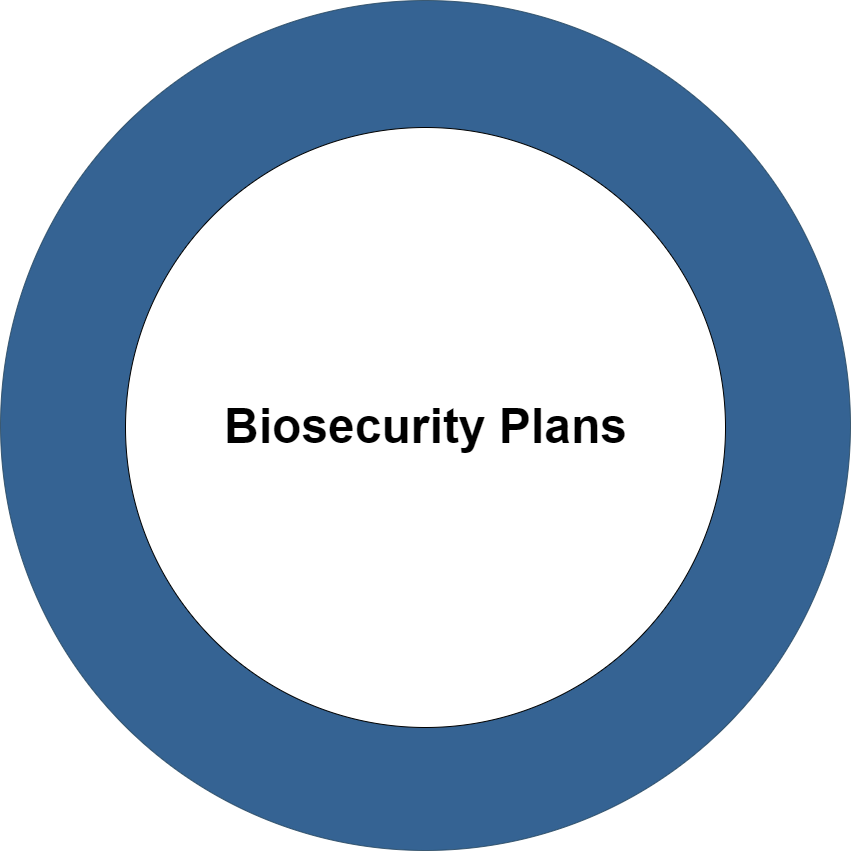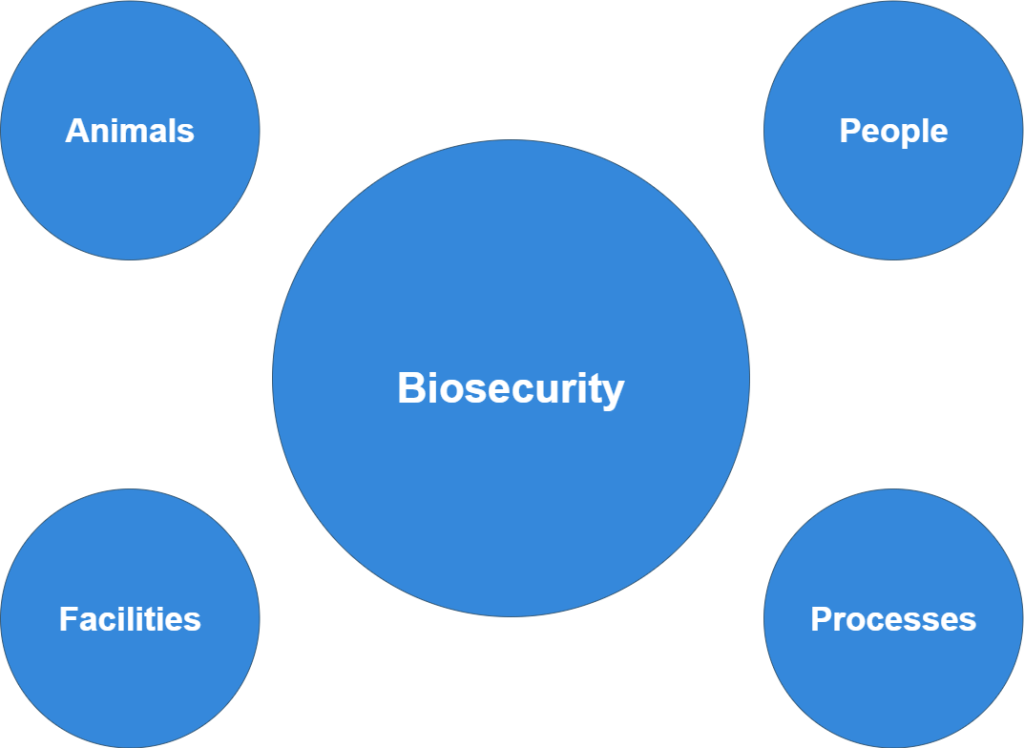8.0 Biosecurity for Aquatic Livestock Production
8.2 Biosecurity Plans
Biosecurity plans (BP) are protocols put in place to ensure that farmers are prepared to address crises when they arise. Figure 8.2 has two concentric circles around the phrase “Biosecurity Plans.” These concentric circles illustrate the “circles of control” for biosecurity. The BP describes the white inner circle. The inner circle is how everything operates normally when the facility is not being challenged. Challenges can come in numerous ways and directions, and a robust BP will identify those pathways and address the control methods and response action to intrusions through a contingency plan.

Many BPs seem to be incomplete until a contingency plan (CP), sometimes referred to as a disaster preparedness plan, is considered. A CP is the “plan B” of a BP implemented when an area of the BP is not able to be maintained. This failure in the BP may be something mechanical, such as a power outage, or biological, such as a flock of herons arriving each autumn. The BP may stipulate the alternative for power outages, but the CP specifies what is to happen with operations when storms knock out power and the backup power is damaged or out of fuel. The BP may have standards for vermin control, but the CP outlines what can be done if the weather changes unexpectedly and affects the behaviors of wildlife not typically encountered.
Try to envision the amount of CP needed. Two extremes can result from this second level of planning. The CP can be so slim that it is ineffective or so elaborate that it may interfere with daily operations or business opportunities. The appropriate level of security in the BP and CP is multifactored and depends greatly on the management’s risk aversion.
A good BP will affect several aspects of the facility operations and management, including the number of personnel, documentation procedures, a chain of command, and traffic flows. For example, the BP will specify the number of employees or other personnel needed to maintain the functions required of the facility. It could specify these numbers under normal operations and various scenarios like severe weather that would prevent most employees from making it to work safely. In addition, a strong BP will also outline how incidents are documented.
Why Is Documentation Important?
Something that may seem insignificant at the time of documentation may become disastrous in a few weeks. Without documentation, tracing the time and origin of an issue becomes impossible. Therefore, access to records is paramount in operating with a BP in place. Beyond staffing and documentation, the BP specifies the chain of command by listing the responsibilities of staff and corrective actions to be taken by a specific employee. One final component of the BP involves managing and moving traffic flow in the facility. For example, if allowed, visitors have designated areas to visit after logging in on the visitor roster, and pets are prohibited. Perimeter fencing will demark the boundaries of surveillance and exclusion of vermin and significantly impact visitor traffic flow at the facility.
Some readers may suspect the BP is some process control. It is a correct suspicion to carry through this chapter. Indeed, there are similarities to quality control/quality assessment, better management plans, hazard analysis, critical control points, International Organization for Standardization (ISO) standards, biosafety standards, and many aspects lumped under preventative medicine.
Four Spheres of a Successful BP
Major aspects of a successful BP are based on four spheres of consideration, as follows: facilities, people, animals, and processes. These spheres are described and used to illustrate daily occurrences in aquatic livestock production. If these major aspects of livestock production are well managed within the limits of a BP, the success of an operation will be greatly improved through the prevention of an infectious disease occurrence.

The physical place of production is so important to the health of animals. People are important as far as how the facility is used and managed. The processes will be involved in successfully maintaining the BP. The animals are the focus of the operations. However, the category of animals encompasses both livestock and vermin. The BP must focus on operations with appointed staff supporting the livestock needs. Other people and animals are extraneous and a potential risk to production.
BP’s can become outdated if periodic review is not undertaken by both the management and the attending veterinarian. During the annual or semiannual reviews is critical attention given to the completeness and appropriateness of the BP to the actual operations? Are the Standard Operating Procedures (SOP) still applicable and are there others to be added for critical steps of operation at the current facility?

